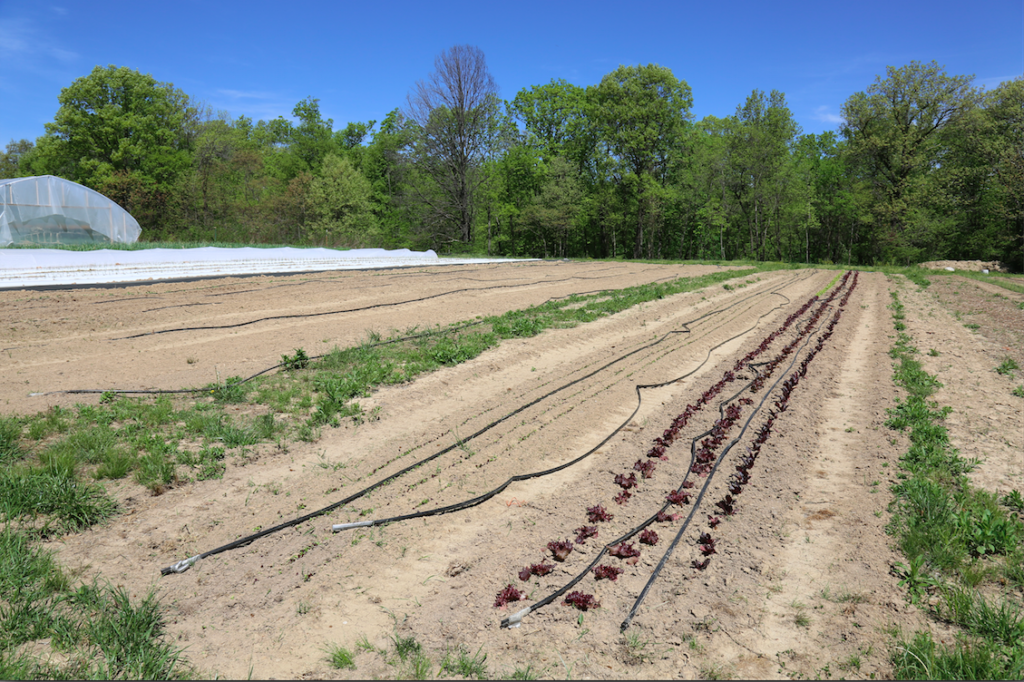What are pesticides?
It is hard to imagine modern agriculture without pesticides, but agriculture’s dependence on these substances can have a impacts on our water’s safety. Pesticides are “any substance used to kill, repel, or control certain forms of plant or animal life that are considered to be pests”[1]. This includes herbicides which control weeds, insecticides which control insect or animal pests, fungicides which control fungi growth, disinfectants to encourage fungi growth, and compounds used to control mice and rats. Pesticides are used for agriculture, but also for domestic uses and personal uses, like RoundUp to control weeds in yards, bug spray, and even common household cleaning products (disinfectants). Pesticides can reach waterways from runoff, leaching, erosion, or incorrect disposal of chemicals by individuals or large corporations.
Our dependence on pesticides for agricultural uses has only grown in the past 50 years. From 1960 to 2008, total pesticide use has increased from 157.68 million pounds to 516.11 million pounds.[2] Genetically modified crops, otherwise called GMOs, complicate the increased use of pesticides within our agricultural system. Many genetically modified crops are altered so that they are resistant to certain pesticides. While the pesticide kills weeds, it can also kill crops, so genetically modified seeds are used so they are able to sustain the pesticides. One of the most common examples of this is Monsanto’s RoundUp Ready corn and soybeans, meant to accommodate RoundUp (glyphosate)[3]. In order to use glyphosate on their crops, farmers must purchase the seeds from Monsanto, ultimately allowing Monsanto to dominate both the pesticide and seed market.
Environmental and Public Health Impacts
Pesticide use can have an impact on our waterways and our drinking water, which it reaches through runoff, leaching, or erosion[4]. After rain, stormwater carries the pesticides from its original location to nearby waterways, like creeks or streams that feed into larger waterways. In the past decade, a variety of chemicals derived from agricultural uses have been found in our groundwater.[5] It is difficult to decipher the long-term health impacts that pesticide exposure can have on humans, but many commonly used pesticides are constantly being tested. Exposure to some pesticides can result in mild side effects, but some can have a more serious impact. Most recently, though, California added RoundUp, one of the most commonly used pesticides, to a list of known carcinogens.[6] Many are pushing for a label which would warn users of its carcinogenic qualities.
Pesticides can impact soil health and the organisms that live in the soil. For instance, while pesticides do a good job of managing the pests, they can degrade the soil and hurt beneficial soil organisms[7]. Additionally, pesticides can be unintentionally harmful to important pollinators like honey bees. A bee affected by the insecticide will either die upon the interaction with the insecticide, or can transport the poison back to its hive and affect other bees, too. [8] Pesticides can also negatively impact wildlife in aquatic ecosystems if leached into waterways. As all pesticides are toxic on some level by their very nature and purpose, they can kill off important organisms like insects, which fish rely on for food or disrupt reproduction of aquatic life [9].
Pesticide Drift
Another common issue associated with pesticide use is the issue of drift. Pesticide drift is “the airborne movement of pesticides from an area of application to any unintended site” [10]. Pesticides can drift from farm to farm, which damages the crop of farmers who are not using crops that are resistant to the pesticide. This is most recently been an issue with the pesticide, Dicamba, which is applied to the genetically modified, Dicamba-tolerant seed.
During the 2017 growing season, farmers in Missouri reported issues with Dicamba drift in startling numbers. From July 1, 2016 to June 29th 2017, the Missouri Department of Agriculture received 212 dicamba-related complaints. 123 of these 212 complaints occurred from January 2017 until June 29th. On July 7, 2017, Missouri Department of Agriculture announced a temporary ban on the selling and on-farm use of dicamba, with an official statement, “The Missouri Department of Agriculture has temporarily issued a Stop Sale, Use or Removal Order on all Dicamba products in Missouri. All of us at the Missouri Department of Agriculture are working to lead Missouri through the challenges we’re facing related to Dicamba drift damage. With any new technology, there are growing pains, and our goal is to help farmers and ranchers on both sides of the issue through them.” Learn the latest on Dicamba from the Missouri Department of Agriculture here. Read more about Dicamba from MCE here.
Alternatives to Pesticides
Luckily, there are many alternatives to pesticides for agriculture. For instance, integrated pest management relies on common-sense practices to manage pests in the least harmful way to both humans and the environment, by understanding the pest’s lifecycle. [12] Additionally, both crop rotation and cover crops can help manage bad pests, while encouraging beneficial insects [13]. These methods of pest control have a variety of benefits, for the environment, insects, soil, and human health.

Hart Beet Farm does not spray pesticides on their farm.
[1] NIH. “Pesticides.” https://www.niehs.nih.gov/health/topics/agents/pesticides/
[2] Food Study. Chapter 7, https://www.moenvironment.org/files/Food_Study_Chapter_7.pdf.
[3] NPR http://www.npr.org/sections/thesalt/2016/09/01/492091546/how-gmos-cut-the-use-of-pesticides-and-perhaps-boosted-them-again
[4] “Pesticide Properties That Affect Water Quality” Douglas Stevenson, Paul Baumann, John A. Jackson. http://extentopubs.tamu.edu/bulletins/b-6050.html) .
[5] Pesticide Safety Education Program. http://psep.cce.cornell.edu/facts-slides-self/facts/pes-heef-grw85.aspx).
[6] CNN. “California says keep ingredient in weedkiller Roundup can cause cancer.” http://www.cnn.com/2017/06/28/health/california-glyphosate-cancer-chemical-listing/index.html
[7] National Pesticide Information Center. http://npic.orst.edu/envir/soil.html
[8] UGA College of Agricultural and Environmental Science. http://npic.orst.edu/envir/soil.html
[9] Virginia Cooperative Extension. https://www.pubs.ext.vt.edu/420/420-013/420-013.html
[10] National Pesticide Information Center. http://npic.orst.edu/reg/drift.html.
[11] Missouri Department of Agriculture. Pesticide Control: Dicamba. http://agriculture.mo.gov/plants/pesticides/dicamba-facts.php
[12] Integrated Pest Management. EPA. https://www.epa.gov/safepestcontrol/integrated-pest-management-ipm-principles
[13] Sustainable Agriculture Research and Education. http://www.sare.org/Learning-Center/Books/Managing-Cover-Crops-Profitably-3rd-Edition/Text-Version/Benefits-of-Cover-Crops
